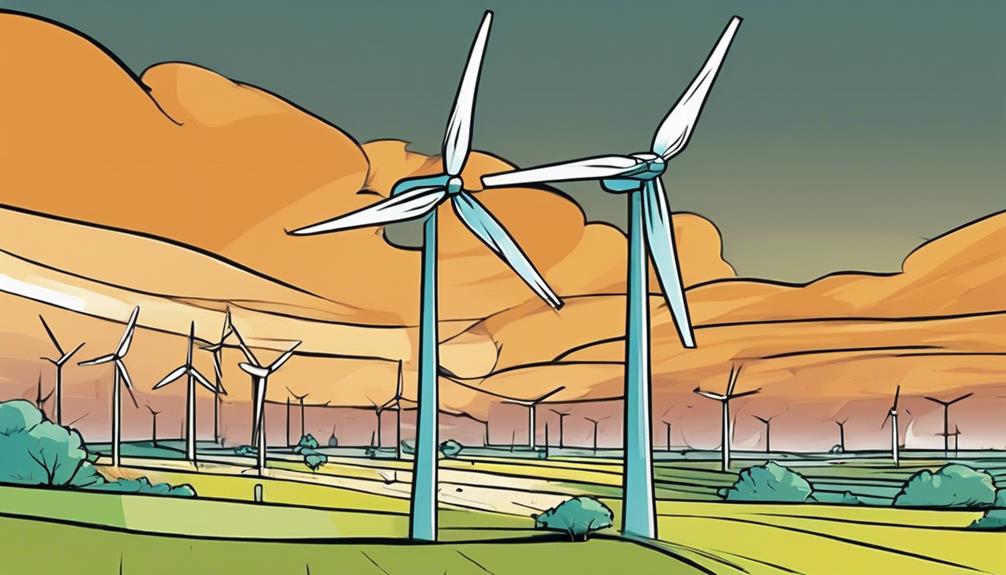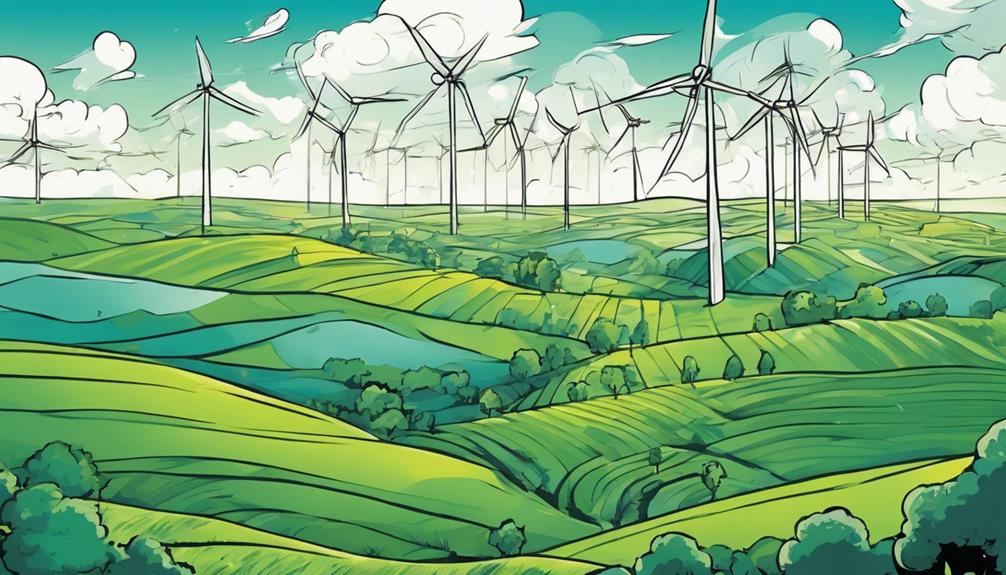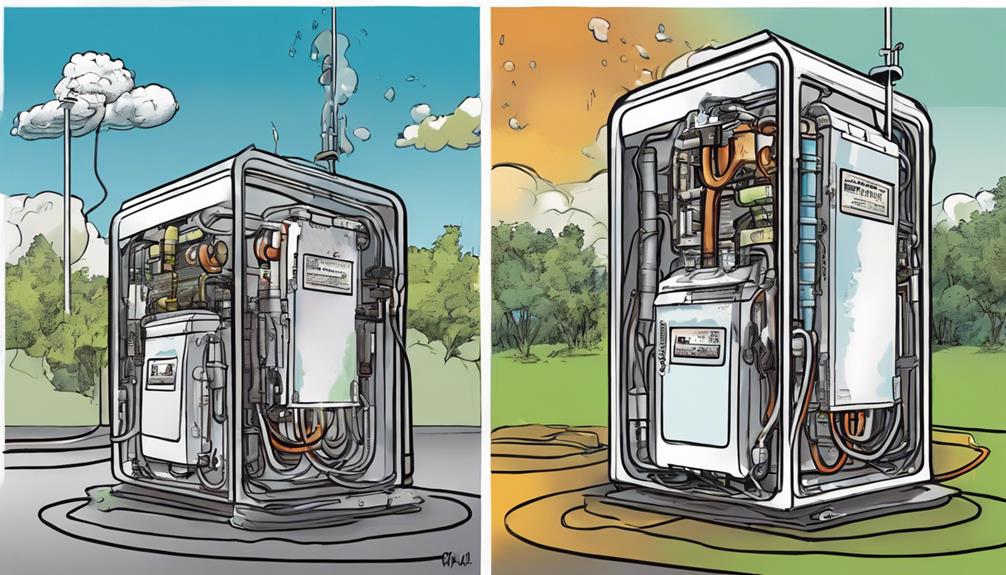To operate a wind turbine effectively, aim for wind speeds of 7 to 9 mph for power production. For peak efficiency, target speeds between 25 to 55 mph before safety measures engage to shut down the turbine. For a more in-depth understanding of how wind speed impacts turbine operations, there is valuable information available on blade feathering, monitoring operations, specialized turbine machines, power production mechanisms, kick-start importance, and blade rotation speeds.
Key Takeaways
- Minimum wind speed for operation: 7-9 mph for power production.
- Peak efficiency wind speed: 25-55 mph for optimal energy output.
- Shutdown safety measure: Turbine shuts down around 55 mph.
- Turbine damage prevention: Cut-out speed crucial for operational safety.
- Monitoring wind speeds: Anemometers vital for turbine safety and efficiency.
Wind Speed Requirements
To maximize performance, wind turbines require specific wind speeds to efficiently generate electricity. The minimum wind speed needed for a wind turbine to start producing power is generally between 7 to 9 mph. At this threshold, the turbine is able to overcome inertia and begin rotating the blades to generate electricity.
As the wind speed increases, the power output of the turbine also rises, reaching peak efficiency between 25 to 55 mph. Within this range, the turbine operates most effectively, capturing the maximum amount of wind energy to convert into electricity.
Conversely, to protect the turbine from potential damage, it's programmed to shut down at high wind speeds, typically around 55 mph. This safety measure ensures that the turbine blades don't spin too rapidly, risking structural integrity.
Power Curve Explanation
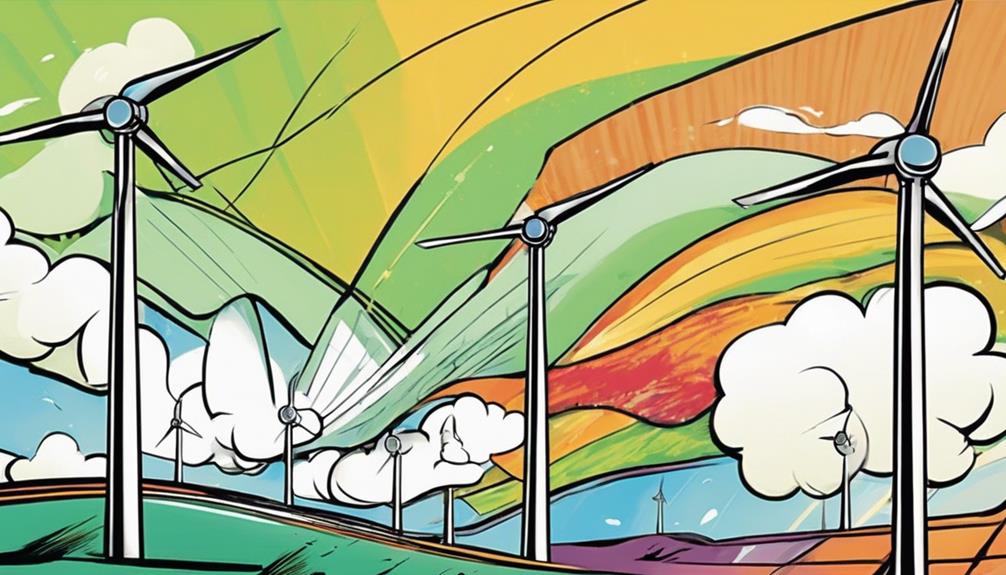
When looking at the power curve of a wind turbine, you'll see how power output varies across different wind speeds. Understanding the wind speed range at which the turbine operates efficiently is important for maximizing energy production.
Factors like blade angle adjustments and monitoring wind speeds play a key role in maintaining operational efficiency.
Power Curve Overview
Understanding the power curve of a wind turbine is vital for optimizing performance and ensuring safe operation. The power curve graphically illustrates the relationship between power output and wind speeds. It typically includes key points such as the cut-in speed, which is the minimum wind speed needed for the turbine to start operating; the rated speed, where the turbine reaches its maximum power output; and the cut-out speed, which safeguards the turbine by stopping operation in excessively high winds.
Between these speeds, the turbine operates at a constant power output determined by the prevailing wind conditions. By comprehending the power curve, operators can monitor and adjust the turbine's performance to maximize energy production efficiently. This knowledge is essential for maintaining the turbine's safety and effectiveness while harnessing the most power from varying wind speeds.
Wind Speed Range
The wind speed range within which a wind turbine operates is vital for maximizing efficiency and ensuring safe performance. The power curve of a wind turbine illustrates how the power output varies with different wind speeds. Wind turbines have a cut-in speed, below which they do not generate power, and a cut-out speed to prevent damage to the turbine components. Operating within the specified wind speed range is critical to optimize efficiency and protect the turbine from excessive strain.
To better understand the relationship between wind speed and power output, take a look at the table below:
| Wind Speed (m/s) | Power Output (%) |
|---|---|
| 0 | 0 |
| 3 | 20 |
| 6 | 50 |
| 9 | 80 |
| 12 | 100 |
Operational Efficiency Factors
Exploring the power curve of a wind turbine provides valuable insights into how power output varies with changing wind speeds. The power curve graphically represents the relationship between wind speed and the amount of power a turbine can generate.
At the lower end of the curve is the cut-in speed, which is the minimum wind speed required for the turbine to start operating efficiently. As the wind speed increases, the power output also rises until it reaches the rated speed, which is the point at which the turbine generates its maximum power output.
Beyond the rated speed, the turbine operates at its maximum capacity until it reaches the cut-out speed. This speed is vital as it marks the point at which the turbine shuts down to prevent damage from excessively high wind speeds.
Understanding and optimizing the power curve is key to maximizing the efficiency and performance of wind turbines.
Wind Speed Measurement
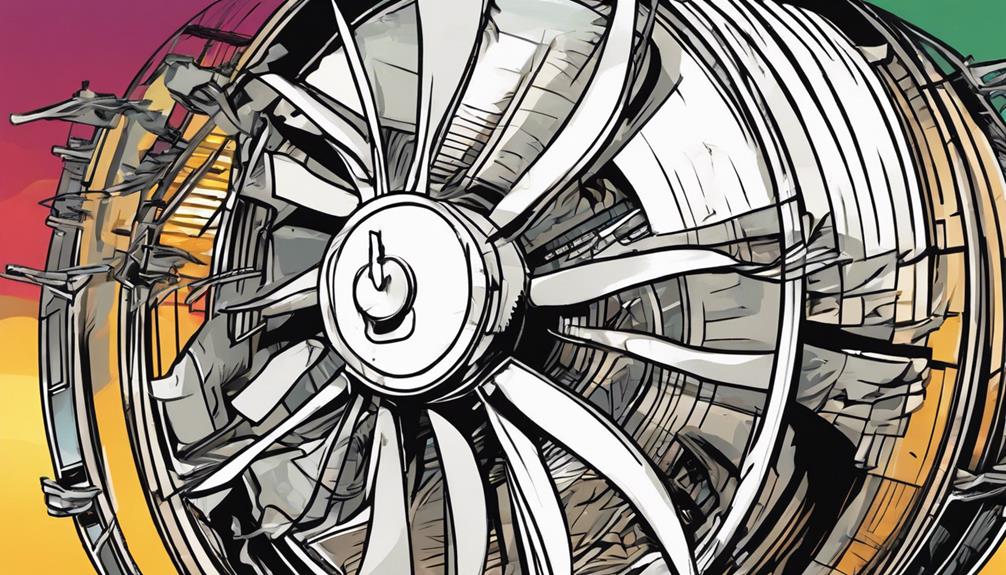
To accurately measure wind speed for wind turbine operation, anemometers are commonly utilized in conjunction with wind vane instruments for tracking wind direction.
Anemometers, which come in various types like cup, vane, or sonic, play a pivotal role in determining the speed at which the wind is blowing. These instruments detect the pressure exerted by the wind and convert it into a wind speed measurement.
Wind vane instruments, on the other hand, help in indicating the direction from which the wind is coming. By combining wind speed measurements from anemometers with wind direction data from wind vanes, operators can enhance the positioning and alignment of wind turbines to maximize energy production.
Accurate wind speed measurement is essential for ensuring that wind turbines operate within their most efficient speed ranges, effectively converting wind energy into electricity while maintaining safety protocols.
Blade Feathering Process
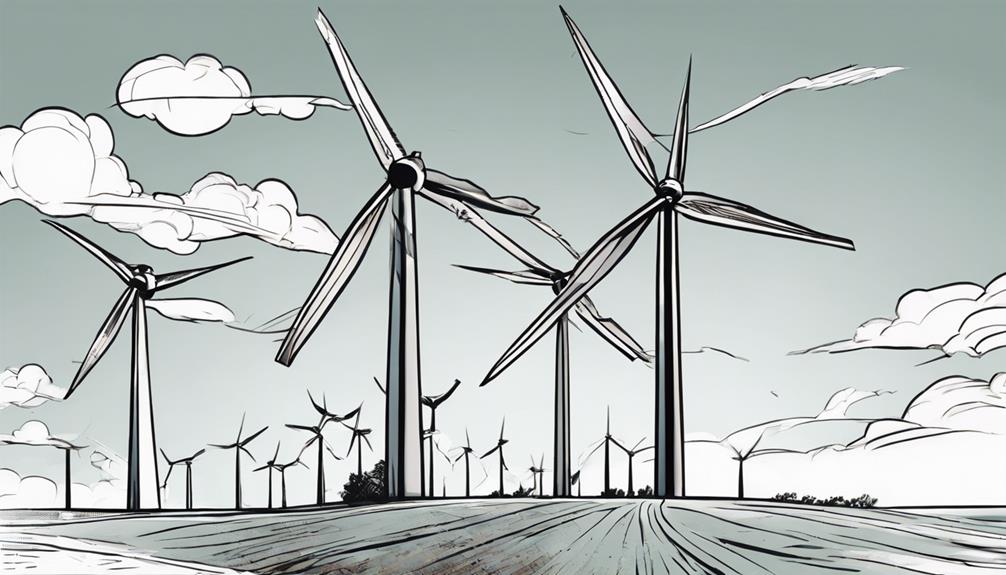
Blade feathering is an important safety mechanism implemented in wind turbine operation to reduce wind resistance on the turbine blades during high wind speeds. When wind speeds increase, turbine blades can be rotated to change their angle of attack, reducing the surface area exposed to the wind. This process helps prevent damage to the turbine by decreasing the force exerted on the blades, ultimately safeguarding the overall structure.
By feathering the blades, wind resistance is minimized, allowing the turbine to continue operating efficiently and safely in challenging weather conditions. In gusty conditions, turbines can further secure the blades to prevent excessive strain on the system. Yaw drives play a vital role in ensuring that the rotor continuously faces into the wind, optimizing power generation while feathering the blades as needed for safety.
Blade feathering stands as an essential safety measure in protecting wind turbines during periods of high wind speeds.
Monitoring and Resuming Operations
You should know that anemometers play a pivotal role in safeguarding wind turbines by triggering a cut-out speed of around 55 mph when wind conditions become hazardous.
Once wind speeds decrease to safe levels, the turbine blades automatically unfeather, allowing the turbine to resume its normal operation smoothly.
Anemometer Cut-Out Speed
An important safety feature in wind turbine operations is the anemometer cut-out speed, which triggers turbine shutdown at around 55 mph to guarantee safe conditions. Anemometers play a critical role in monitoring wind speeds to make sure that they don't exceed the cut-out speed, which could lead to potential damage or accidents during turbine operation.
By constantly measuring wind speeds, anemometers provide real-time data that allows turbines to automatically shut down when wind speeds reach unsafe levels. This proactive measure helps prevent any risks associated with high wind speeds, safeguarding both the turbine and the surrounding environment.
Cut-out speeds are set at a level where wind speeds could potentially cause harm to the turbine structure or components. Once the wind speeds decrease to safe levels, anemometers also assist in resuming turbine operations by signaling the system to unfeather the blades and resume normal functioning.
Turbine Resumption Process
During the turbine resumption process, wind speeds are closely monitored to secure safe and efficient operations. Anemometers trigger cut-out speeds around 55 mph to secure turbine safety in high winds.
As wind speeds decrease to safe levels, the blades unfeather automatically, allowing the turbine to resume normal operation. This resumption process is automated, securing efficient and timely restoration of renewable energy generation.
Once wind speeds are suitable, the turbine reconnects to the grid, contributing clean electricity back to the power system. Monitoring wind speeds and resuming operations are essential components of wind turbine safety and efficiency protocols.
Block Island's Test Results
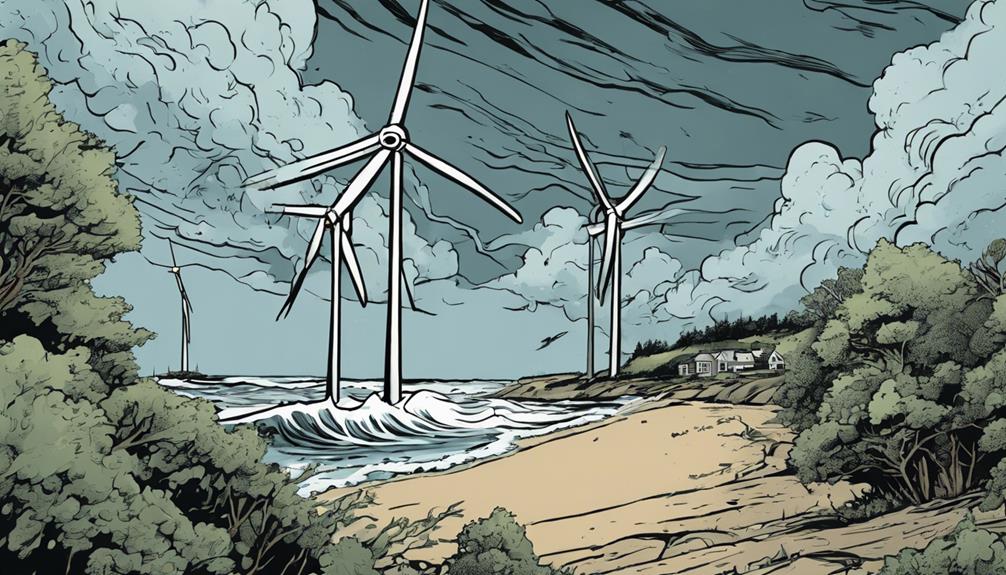
The test results from Block Island's wind turbines demonstrated their operational reliability during winter storm Stella in March 2017. Despite facing high wind speeds exceeding the maximum operating limit, all turbines functioned at full capacity until automatic cut-out systems initiated shutdown protocols as a safety measure. This successful shutdown not only protected the turbines from potential damage but also highlighted the effectiveness of the safety mechanisms in place. After the storm passed, the turbines were able to resume normal operation seamlessly, showcasing their resilience and reliability in adverse weather conditions.
| Wind Speeds | Maximum Operating Limit | Automatic Cut-Out Systems |
|---|---|---|
| Exceeded Limits | Yes | Yes |
Specialized Turbine Machines
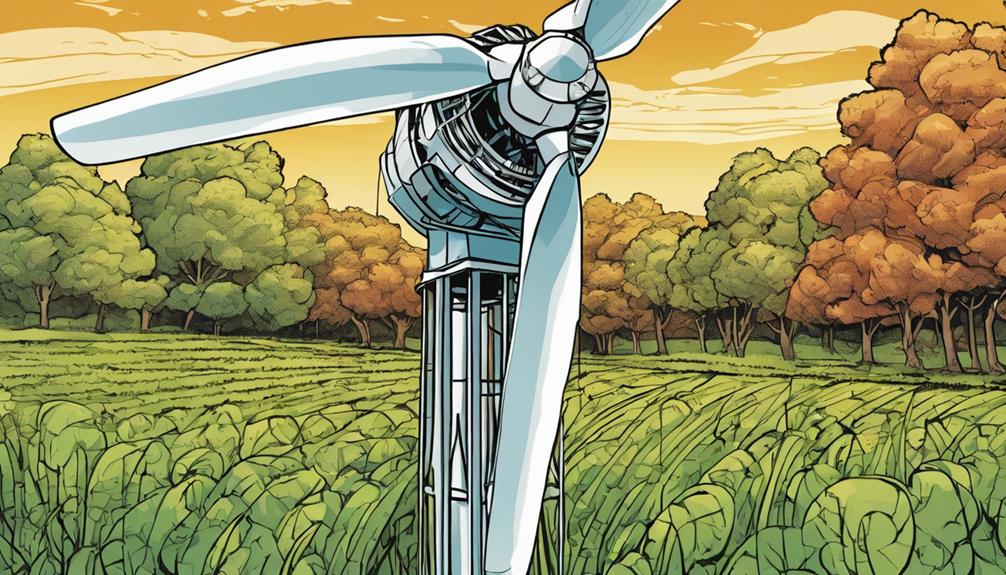
Specialized turbine machines, especially the new generation models, can efficiently harness wind energy at lower speeds, showcasing advances in technology. These wind turbines start operating at approximately five miles per hour, allowing for increased operational efficiency compared to older models.
When it comes to high winds, it's important to take into account the differences between smaller and large-scale turbines. Smaller turbines, although more vulnerable to damage in strong winds, are capable of generating less energy. On the other hand, large-scale turbines, which typically begin turning at wind speeds of seven to nine miles per hour, can withstand higher wind speeds. These large turbines can reach impressive top speeds of around 50-55 mph. To ensure safety, a braking system is in place to halt operations at 55 mph.
The evolution of wind turbine technology continues to push boundaries, making wind energy a more viable and sustainable option for electricity generation.
Power Production Mechanisms
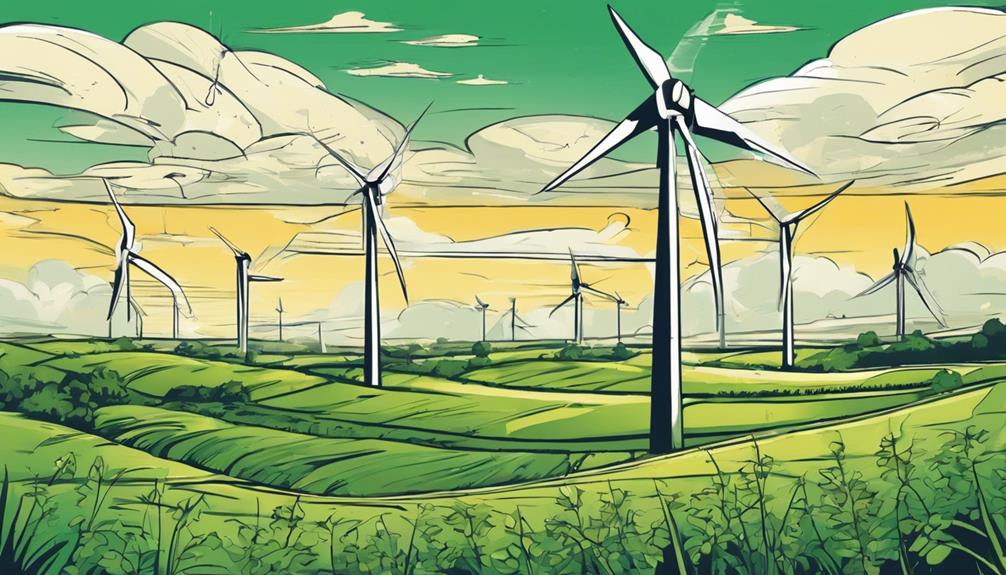
You know that understanding the power production mechanisms of wind turbines is essential for maximizing energy output.
The power curve explanation reveals how different wind speeds impact the efficiency of electricity generation.
Power Curve Explanation
Understanding wind turbine power curves is essential for optimizing performance and ensuring safe operation. The power curve of a wind turbine depicts the relationship between power output and wind speeds.
It highlights the cut-in speed, the threshold at which the blades start rotating, and the rated speed for maximum power production. As wind speeds increase, the turbine maintains a constant power output until it reaches the cut-out speed. This speed marks the point at which the turbine shuts down to prevent any potential damage.
By comprehending the power curve, operators can fine-tune the turbine's performance and make informed decisions to enhance efficiency. Monitoring wind speeds and power production along the power curve is critical for ensuring consistent and reliable energy generation.
Wind Speed Impact
The power production of a wind turbine is greatly influenced by the changing wind speeds it encounters. Wind speed directly impacts the turbine's ability to generate electricity, with best power output achieved within specific wind speed ranges. Here's a breakdown of how wind speed affects power production:
| Wind Speed | Power Production |
|---|---|
| Minimum (7-9 mph) | Low power output, turbine starts operating. |
| Rated (25-30 mph) | Maximum power output achieved. |
| Cut-out (55 mph) | Turbine shuts down to prevent damage. |
Operating a wind turbine within its ideal wind speed range is essential for maximizing power generation. Understanding how wind speed influences power production can help in selecting suitable locations for wind turbine installations, ensuring efficient and sustainable electricity generation. By leveraging varying wind speeds effectively, wind turbines can contribute significantly to clean energy production.
Electric Kick-Start Importance
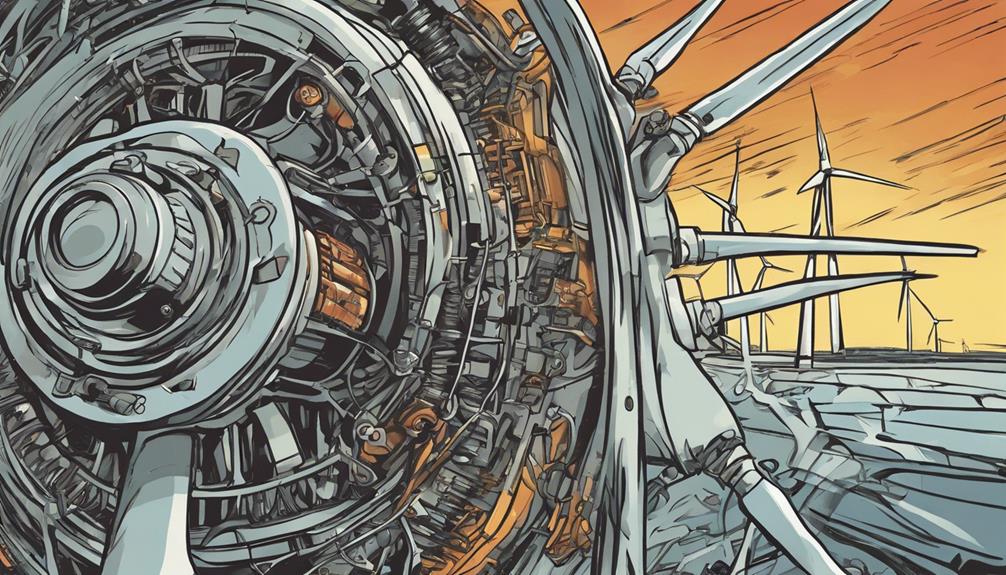
Initiating blade rotation in industrial-scale wind turbines is crucial for kick-starting the power generation process. The electric jump-start plays a vital role in this process, helping to overcome inertia and efficiently start the rotation of the blades.
- Overcoming Inertia: The electric jump-start is essential for overcoming the initial resistance of the stationary blades and getting them into motion. This initial push provided by the electric jump-start sets the blades in motion and enables the wind turbine to start generating power efficiently.
- Efficient Starting Process: Industrial-scale wind turbines need external assistance, like an electric jump-start, to ensure a smooth and efficient starting process. Without this jump-start, the blades may struggle to overcome inertia, leading to delays in power generation initiation.
- Blade Rotation Initiation: The electric jump-start is necessary for jump-starting the rotation of the blades in wind turbines. It helps to kick off the entire power generation process by setting the blades in motion, ready to harness wind energy efficiently.
Blade Rotation Speed Impact
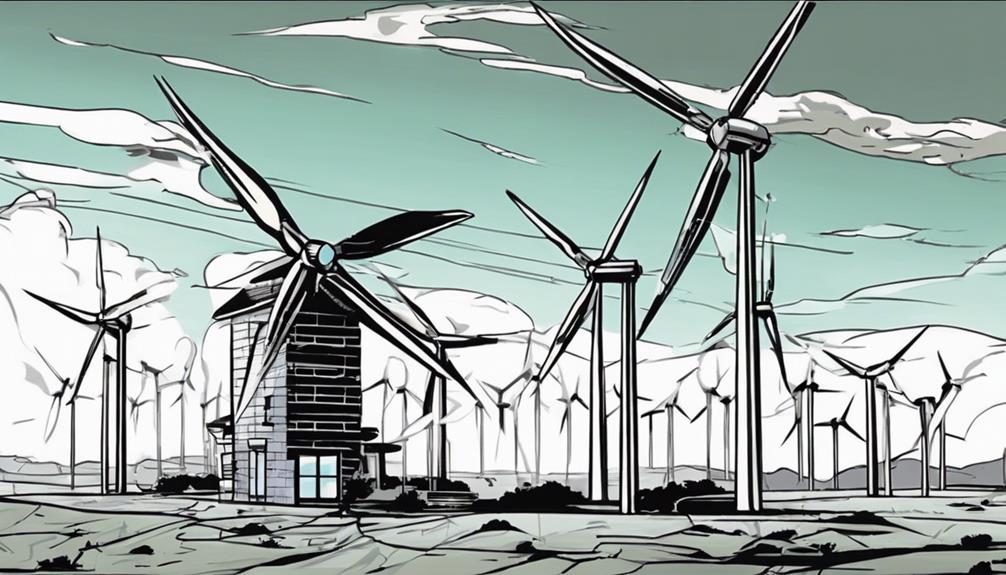
Blade rotation velocity significantly influences the electricity output of wind turbines, playing a vital role in their effective operation. The rotation velocity of wind turbine blades typically ranges from 30 to 60 revolutions per minute due to the force of the wind.
To efficiently generate electricity, a gear box is utilized to increase the rotation velocity to a range of 1000 to 1800 revolutions per minute. Higher rotation velocities are crucial for most generators to efficiently produce electricity in wind turbines.
It's clear that the blade rotation velocity directly impacts the amount of electricity generated, making it a pivotal factor for best power generation and overall wind turbine efficiency.
Ensuring the appropriate blade rotation velocity is maintained is necessary for maximizing electricity generation and the operational efficiency of wind turbines.
Frequently Asked Questions
What Is the Minimum Wind Speed for a Wind Turbine?
To start generating power, a wind turbine generally needs wind speeds of around 7 to 9 miles per hour. This minimum speed, called the cut-in speed, kickstarts blade rotation. Lower cut-in speeds boost efficiency by capturing energy from lighter breezes.
What Is the Maximum Wind Speed a Wind Turbine Can Operate?
Imagine a wind turbine as a delicate dancer; at speeds above 55 mph, it falters. Excessive strain threatens its grace and safety. Automatic safeguards protect it from harm. Operating at max speeds risks efficiency and safety.
What Is the Minimum Speed of Wind for a Windmill to Be Operational?
To operate a wind turbine, make sure the wind speed is at least 7-9 mph. Below this, efficiency drops. Also, avoid exceeding 55 mph, as it's the upper limit for safe operation. Stay within these ranges for best energy production and turbine protection.
What Is the Maximum Wind Speed for Offshore Wind Turbines?
When operating offshore wind turbines, it's critical to take into account the maximum wind speed. Exceeding safe limits, around 55 mph, can pose risks. Monitoring and safety systems guarantee turbines function efficiently and protect against damage.
How Does Wind Speed Impact the Infrastructure Requirements for Wind Turbine Energy Utilization?
Wind speed directly affects the infrastructure requirements for wind turbine energy. Higher wind speeds necessitate stronger and more durable materials for the construction of turbine components and support structures. Additionally, higher wind speeds may require more extensive grid connectivity and energy storage capacity to accommodate fluctuating energy production.
Conclusion
So, when it comes to operating a wind turbine, remember that the minimum wind speed required is typically around 6-9 mph, while the maximum wind speed is usually around 55-70 mph.
Surprisingly, did you know that a wind turbine can generate electricity even at wind speeds as low as 6 mph? This means that these machines are constantly working to harness the power of the wind and create sustainable energy for us all.
Amazing, right?
